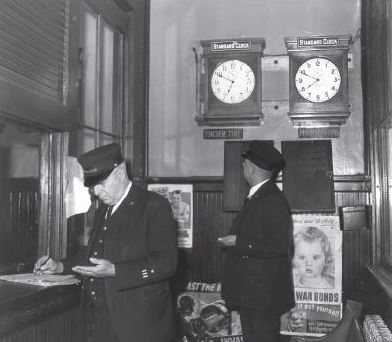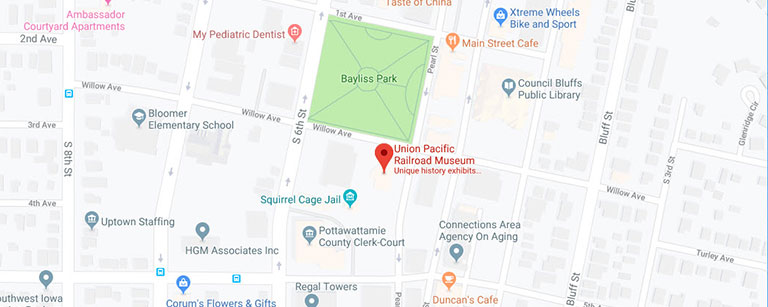Time is of the essence... or the railroad?

Two conductors synchronize their watches to depot standard time clocks.
In the 19th century, time was a local matter. Most communities had a clock in the town square that provided the time. This method of keeping time was called sun-time, because the clocks were set by the position of the sun -- meaning the time of day varied from town to town. Railroads, however, needed to keep precise time. In the earliest days of railroading, trains operated according to timetables that told locomotive engineers when to expect another train. For the system to work, engineers had to agree on the precise time of day at any given moment.
In 1809, 1870 and 1872, Congress considered and rejected calls to establish national standard time. Needing a more organized method of keeping time, railroads in the United States and Canada took the matter into their own hands. On November 18, 1883, known as "the Day of Two Noons," railroads implemented a system of time zones. It was called "the Day of Two Noons" because in the eastern part of each time zone there was a noon based upon sun-time; then another noon when clocks and watches were set back to the new standard railroad time.
Reactions were mixed. Some citizens felt that by adopting standard time, they were being robbed of some of their daylight, or that they were being compelled to abide by a timing system that was contrary to nature. Others wanted a different method of standardizing time, such as one single time for the entire country, or a 24-hour clock. Despite the different opinions, the system remained in effect. In 1918, Congress finally passed the Standard Time Act that officially adopted the time zones previously established by the railroads.

